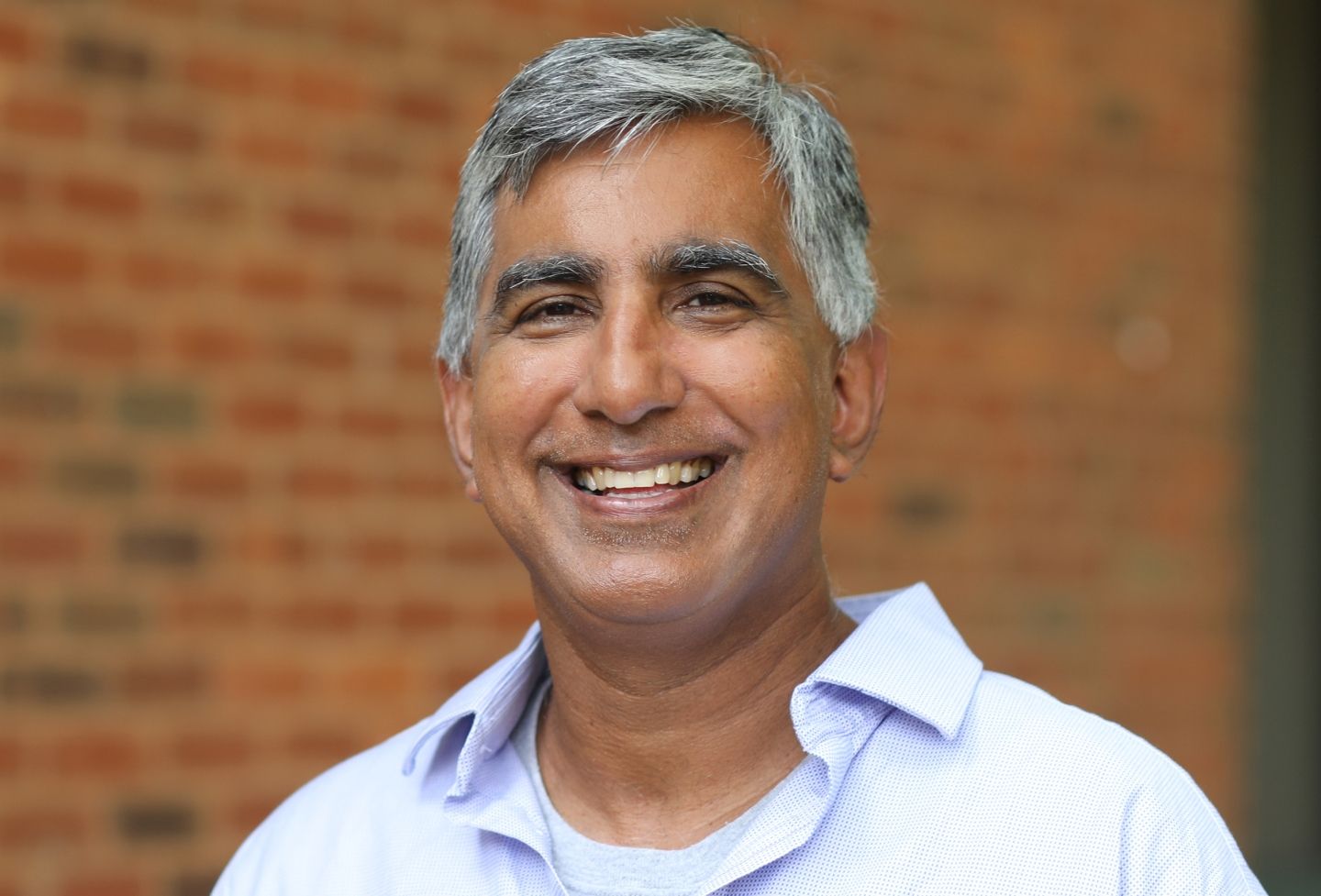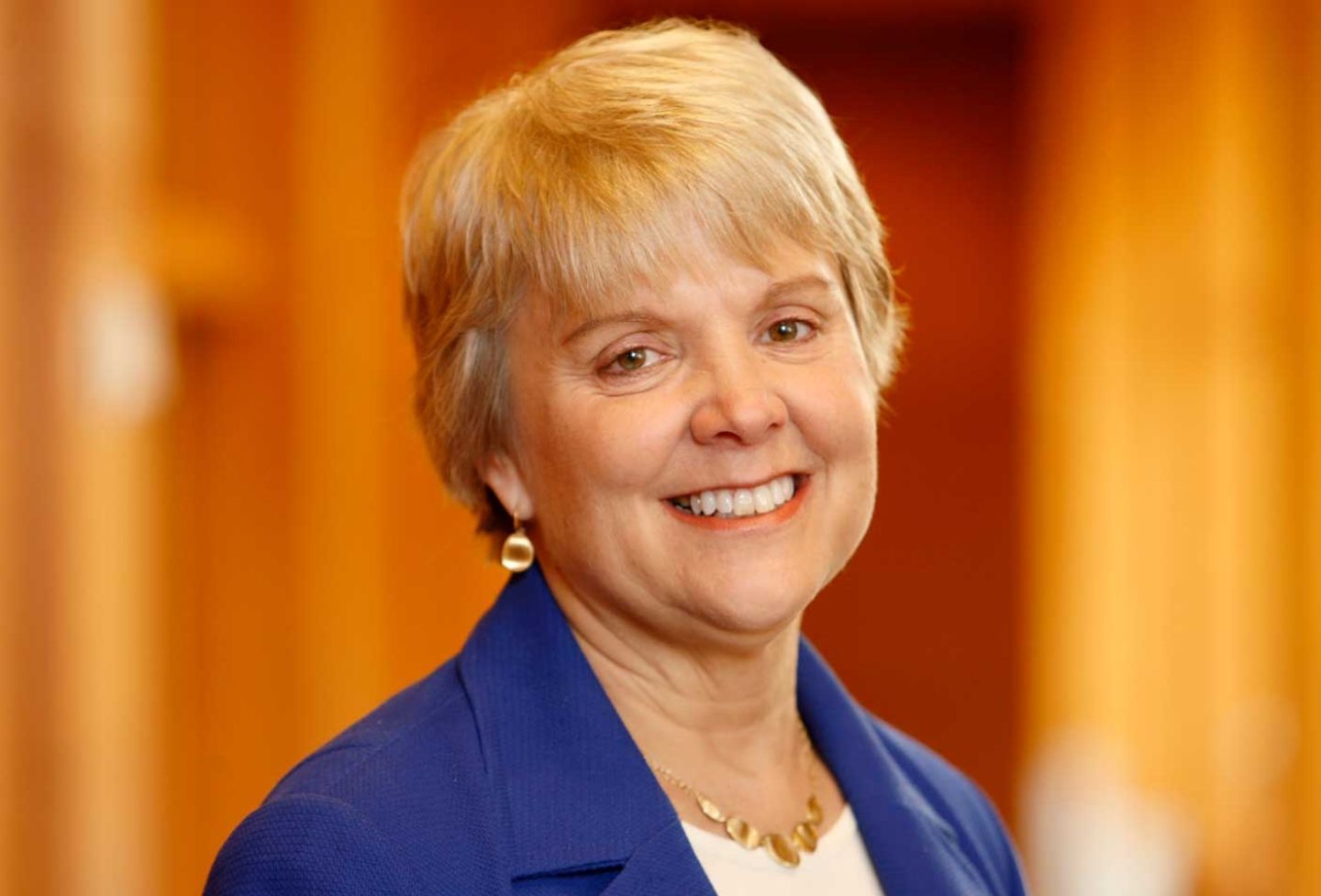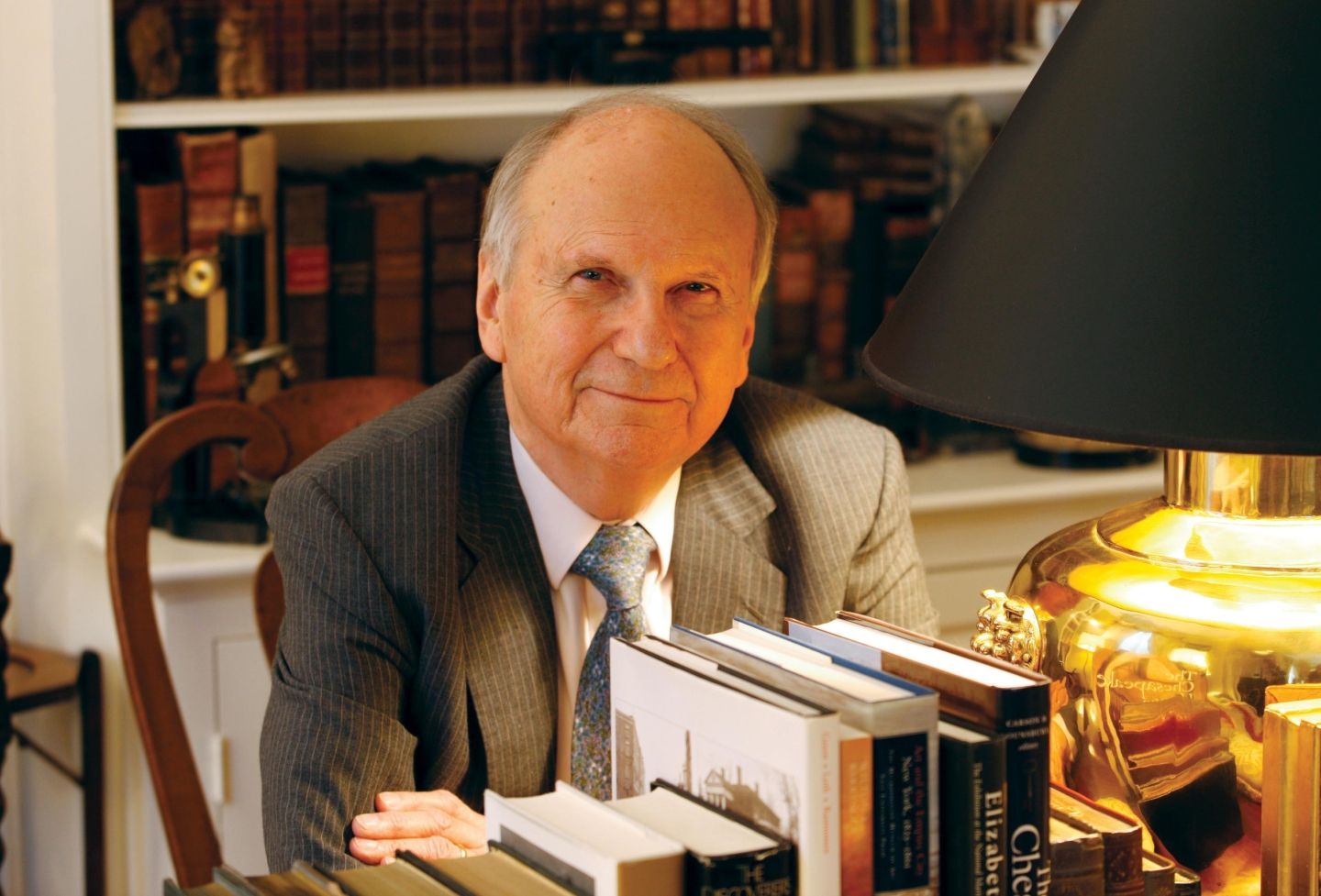Professors at the University of Virginia School of Law have learned new ways of teaching in the past several months, as many classes moved online due to the COVID-19 pandemic.
About half of the school’s courses this fall were offered as hybrid courses, taught both in person and online, and about half were offered online only. As the semester wrapped up, Professors Kenneth S. Abraham, Quinn Curtis, Cathy Hwang and Kimberly Jenkins Robinson shared their experiences and lessons learned from teaching online on Zoom.
Tell me about a class you adapted for teaching on Zoom and how you changed it.

Abraham: I am teaching 1L Torts. My principal aim has been to give students in that class, as nearly as possible, an experience that replicates the 1L experience they would have had if the class were in person. I adapted the class in a number of ways.
First, during the first two weeks of the semester I met with students in groups of four or five in Spies Garden — socially distanced, of course. That way I got to know the students in person and they got to know me. As a result, when we see each other on a computer screen, we are seeing people who are real to us.
Second, I prepare PowerPoint slides providing a road map of each class, and post them on the course website in advance. This serves as a partial substitute for a blackboard, but also gives students a sense of where each class is going.
Third, I make sure that I “cold call” on students during each class, as I do when I teach in-person classes, so that students get the experience of having to think on their feet.
Finally, because my students do not have another class immediately after mine, I remain on Zoom at the end of each class and hold collective “office hours” for 20 minutes. I encourage students to ask questions during class, but the immediate availability of office hours means that students who would rather not ask a question in class know that they will have an opportunity to have questions answered right after the class ends. This is actually a whole lot better than standing at the lectern after an in-person class and quickly answering individual questions while other students wait in line. About half the class of 37 students usually stays for at least a portion of office hours, just to listen to the answers that other students ask. Of course, I’ve also met with students individually, both on Zoom and in person, for conferences when they have wanted to have a meeting.

Hwang: Over the summer, the Law School had a lot of helpful sessions on online teaching, and I also went to a couple at the School of Education. The big takeaway I got was that it’s very hard to sit and passively listen to lectures on a computer for more than a few minutes. My class has always had interactive parts that ask students to try applying a new rule or think about how they would advise a client. So I added more of those parts, made sure they were sprinkled more throughout the class, and also broke up chunks of lecture into shorter bites.
One thing I really miss is casual student interaction — having students pop by my office on their way to something else, and, in the process, tell me something that they’re confused about in class, something that might be interesting to them in class, or something that’s happening in their real lives. So, at the beginning of the semester, I set up group Zoom “coffee chats” so that students could get to know me. In the last few weeks, I’ve been doing short “hallway chats” with smaller groups, where our stated mandate is that we’re not talking about anything class-related. During this, I’ve gotten to see lots of students’ pets, hear about their hobbies, and even gotten some recommendations for restaurants and spooky Halloween decoration ideas!

Curtis: My seminar in Environmental, Social and Governance issues is online only. It’s 18 students and works quite well. The dynamics are much the same as the in the classroom, and it’s easy for students to have conversations over Zoom.

Robinson: For my seminar on Law, Inequality and Education Reform, I had students do what’s called a discussion spark. And that is, students are allowed to bring in — to build off of the current topic for the class — an additional article, or short video or something that they found outside of the assigned reading but that would be interesting for the class to discuss. I got that idea from a colleague in our faculty, Crystal Shin, who was normally doing it. But I felt that after the trainings we had this summer, it really is worth it to have the students do something different to engage participation, because my seminar is very discussion-based. This allowed students to have a chance to own the discussion and raise questions to the class about things that interested them in relation to the reading. And it worked well. So we do that for the last 20 or so minutes of class.
What did you learn along the way? Any tips to pass on to other teachers?
Abraham: As a teacher, you have to get comfortable not having any auditory feedback while you are speaking, because the students’ microphones are all muted. I had not recognized how much a little bit of noise — papers rustling, students turning pages, etc., is a part of the reality of speaking to a group in person. Once dialogue begins in a Zoom class, at least you are receiving audio from one student, and the process seems more real and less weird. I also learned that there have to be more pauses to allow Zoom to pick up the sound of the person talking. You can’t talk over each other the way you might in class for a second, because the mic can only broadcast one voice at a time. But the main thing I learned is that the process is a whole lot more like teaching in person than I expected it to be.
Hwang: I think that students are incredibly understanding about the fact that we’re adapting to new technology — so practice it, but don’t stress out. Also, just adopt the technology that makes sense for your class. For instance, I don’t use Poll Everywhere — I just use the “yes” and “no” buttons for a show of hands. Finally — this is a weird one — watch some content from popular YouTubers (my favorites are Safiya Nygaard and CupofTJ!). These folks are really good at making video content that basically teaches viewers about something — like beauty fads or food — so it’s fun to watch those and see if there’s anything you can incorporate into your classes.
Curtis: I had a lot of big plans for changes to the class — and we experimented with some things — but a seminar course doesn’t need to be radically revised to work online. The general format, with students taking turns sharing comments, works as well online as in the classroom.
Robinson: The most important thing I’ve learned about teaching on Zoom — which happens organically in a regular classroom — is to take time to intentionally build a connection with my students. At the beginning of this semester, I asked students, “What was hard about this summer? And what brought you joy?” Because 2020 was a year like no other, I wanted to hear from them. How are they doing? And I think that started to build a foundational bonding. It took 40 minutes for 16 students and me to do that. It was a lot of time, but I think it was time well spent, even though we weren’t talking about the material.
And then I checked in with them [later in the semester]. And the students were really struggling. They were exhausted by just the state of the world, the state of the nation, the state of the pandemic — all of it. There just was a level of exhaustion that I haven’t seen before. And so that led me to adjust some things that were required of them for the course, to try to give them the space to just deal with everything that’s going on. And I think that I should always do that, not just when we’re in a pandemic, but I think I’m going to start doing it in the classroom. Because I think we don’t ask students that enough.
I know we’re here to teach them to be excellent lawyers, but I think we also are building relationships that will endure. Not just while they’re in law school, but as alumni.
Have you had any surprises, for example that some things are better on Zoom?
Abraham: Some things are actually better. I have two computer screens and extra processing speed, so I can see all 37 of my students on one screen, using the other screen for any slide I am using. The result is that I can visually take in the entire class very easily. That is much harder to do in person, when some students are outside your peripheral vision, and students in the back row or two seem pretty far away. On the screen, everyone is pretty close. I can read their facial expressions more easily. And because they are all on one screen, I have them manually raise their hands when they want to talk, and I can see them do that very easily.
Another important difference, I think, is that when a student and I are having a dialogue in an online class, it is more relaxed than in an in-person class. We are “close” to each other in the sense of being close to the screen and seeing each other’s faces, rather than being 30 or more feet apart as we are in an in-person class. Also, I think that at least some students feel less stressed when they are called upon, because they are not physically in front of a group. It is more like a dialogue in an office or across a conference table. On the whole I think that is a positive, since students still have the experience of being required to think on their feet. But eventually they will need to experience what it is like to be thinking on your feet in front of a group in person, and learn how to deal with the additional stress entailed in that experience. They have that in the two in-person classes they still have, however.
Hwang: I *love* my class’ chat box. In the beginning of class, I told students that if there’s something funny they’d usually just say out loud in class, they should put it into the chat. So every other class or so, someone says something truly hilarious, and there are some funny class jokes that keep cropping up there. I love it!
Curtis: I was worried that the conversational aspects of the class would be more awkward online, but that hasn’t been the case. I think we’re all used to some of the finer points of meeting via Zoom and students have the timing down now.
Robinson: I feel like I have figured out how to use Zoom to make it work for me. In my Seminar on Ethical Values, I will ask them a question that they can all answer at the same time in one sentence. For example, I asked when we started discussing Justice O’Connor’s biography, “What are three ethical values that you want a great justice to have?” And so we all responded at the same time. I said, “One, two, three, hit send.” And then we looked to see what overlap there was.
It really grounded the rest of our discussion. Like, “Let’s talk about where we see her showing integrity, or resilience, or fairness or wisdom.”
It was really great. This was instant. And also, everyone could see everyone else’s answers.
Is there anything you want to pass on to students, such as tips for maximizing their experience in online courses?
Abraham: I think that students are likely to have more insight about that than I have. Most of the students I’ve talked to say that the online experience has proved to be better than they expected. What they miss is the interaction with their peers outside of class that they now have only minimally. I’ve encouraged students to organize online study groups as a substitute for the informal intellectual exchange that would otherwise take place in the halls, over coffee or right after class.
Hwang: I find it really hard to focus on video content, especially since we do it all day. I think watching the class on full screen, getting rid of notifications or using some kind of attention app really helps me do it.
Curtis: I think what we miss, more than anything about the class itself, is the chance to chat in the hallways before and after. I stick around for a few minutes after each class, but students should feel comfortable setting up a time to talk about the class. Those conversations are an important part of the law school experience.
Robinson: Just join in the discussion. Everyone at UVA Law has something valuable to share with classmates and with the professor. We can all learn from you. So just bring your whole self to the discussion.
Founded in 1819, the University of Virginia School of Law is the second-oldest continuously operating law school in the nation. Consistently ranked among the top law schools, Virginia is a world-renowned training ground for distinguished lawyers and public servants, instilling in them a commitment to leadership, integrity and community service.


